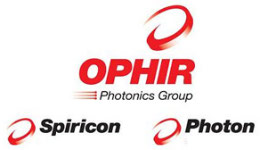Many industries have started using LEDs as a replacement for conventional broadband light sources, including deuterium, xenon, mercury, and quartz-halogen lamps. In order to shift to LEDs, applications and systems are reengineered in terms of heat management, electronics, optics and so on. Equipment must be specially fitted to measure LEDs.
Radiometers and Photometers
Radiometers or photometers are traditionally used to measure broadband sources. However, the response of these sensors is relatively wide and uneven over a certain spectral range, including UVC, UVB, and UVA. The sensor provides an integral of the quantified spectral power density weighted by its own spectral response. Although broadband sources can be measured by these radiometers, LEDs are a different kind of light source.
LED bandwidths are typically between 10-25 nm, except white LEDs, which have a bandwidth of 300 nm. When a radiometer is used to measure an LED’s optical power, it will produce erroneous results based on the LED’s spectrum range corresponding to the radiometer’s spectral response curve. Figure 1 illustrates a UVA sensor’s typical spectral response, and two LEDs’ spectral power densities at 365 nm and 395 nm respectively.

Figure 1. The typical spectral response of a UVA sensor and the spectral power densities of two LEDs at 365nm and 395nm
As observed, the 395 nm LED is at the edge of the response of the sensors, whereas the 365 nm LED is at the peak. The sensitivity of the sensor at the edge is below 10%, leading to a measurement error of over 90%. This clearly shows the limitation of radiometers in performing LED measurements. Alternative instruments for this purpose are spectroradiometers and calibrated photodiodes.
Spectroradiometers
All kinds of light sources, including lasers, LEDs, and broadband sources, can be measured using spectroradiometers with an absolute accuracy of 2% - 10% based on the spectral range and equipment used. It is generally difficult to perform accurate measurements on UV sources. Providing an accurate power measurement without knowing the spectral shape of the source is the major advantage of a spectroradiometer system. However, the high cost of a spectroradiometer is a concern.
Calibrated Photodiodes
Calibrated photodiodes are ideal for laser sources. The photodiode sensor’s spectral response is quantified and stored. The user obtains a calibrated reading on the laser power by entering its wavelength into a power meter. However, LEDs are relatively narrow band sources compared to lasers, with a specific peak wavelength.
LED Power Measurement Uncertainty
An additional uncertainty can be expected during LED power measurement using a calibrated photodiode. The calculation is performed thorough the analysis of a typical LED spectrum and comparison of its optical power as expressed below:

The calibrated photodiode is then used for optical power measurement as expressed below:

Where, I(λ) = The power spectral density of the LED, R(λ) = The spectral responsivity of the photodiode, λ0 = the wavelength selected by the user for representing the spectrum of the LED — usually the peak wavelength of the LED.
A LED spectrum with 22 nm bandwidth and another LED spectrum with 10 nm bandwidth were analyzed. The latter is more characteristic of UV LEDs. The uncertainty allowed in the LED peak wavelength was ±3 nm. Ophir’s PD300RM cosine-corrected irradiance sensor (Figure 2) and a 3A-IS integrating sphere detector (Figure 3) were used for the detector. The calibration of the 3A-IS, a compact integrating sphere with a photodiode, is performed for total power measurement.

Figure 2. PD300RM cosine-corrected irradiance sensor

Figure 3. 3A-IS integrating sphere detector
The 3A-IS also features the AUX-LED, which is a self-absorption calibration accessory. The calibration of the PD300RM sensor is performed for irradiance and dosage measurement. The results for the 3A-ISM and the PD300RM are presented in Figures 4 and 5 respectively. There is a relationship between the amount of uncertainty and the detector’s spectral response. The amount of uncertainty increases at short and long wavelengths where the slope of the response is large. For most part, the additional uncertainty is below 2%, but in certain regions, it increases up to 12%. As can be seen in Figures 4 and 5, the uncertainty relies largely on the linearity of the spectral response of the photodiode.

Figure 4. Uncertainty for LED measurement with the 3A-IS integrating sphere

Figure 5. Uncertainty for LED measurement with the PD300RM irradiance sensor
Conclusion
Calibrated photodiodes can provide accurate measurements of LED power and irradiance because LEDs are relatively narrowband sources and have known peak wavelengths. The total measurement accuracy will rely on the aforementioned additional uncertainty and the accuracy specification of the sensor version employed. Different sources and their measurement options are summarized in the following table:
| |
Radiometer |
Calibrated Photodiode |
Spectroradiometer |
| Broadband sources (Mercury, Xenon, etc.) |
Yes |
No |
Yes |
| LEDs |
No |
Yes |
Yes |
| Lasers |
No |
Yes |
Yes |
| Price |
Low |
Low |
High |
| Total Accuracy |
3%-10%* |
3%-15%* |
3%-10%* |
*Depending on the model and wavelength

This information has been sourced, reviewed and adapted from materials provided by Ophir Photonics Group.
For more information on this source, please visit Ophir Photonics Group.